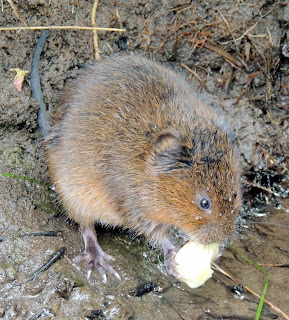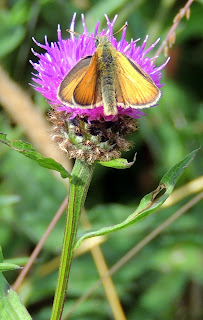Photos above showing the lovely rounded shape of a vole.
Feeding station and droppings at Mossfields.
Vole which had been damaged, probably by fighting. It looked healthy otherwise and was eating well and swimming about, but I haven't seen it for a fortnight. It's either died or found another territory.
Had a look at a few sites now we're coming towards the end of the season. Obviously the field off Edgeley Road's been the hottest spot for water voles in Whitchurch, but it looks as if White Lion Meadow's also done OK as the stone under the bridge has had a latrine on it all summer. I looked further up Edward German Drive but couldn't see anything; then again, the vegetation's too thick to get right down the bank so I may have missed some signs.
Mossfields (the back of Saddler's Walk), amazingly, hasn't dried out despite the hot weather, and the voles there seem to be doing well if the amount of feeding is anything to go by.
Greenfields Nature reserve is a mystery. Again, the vegetation there is so thick I can't get down to the water to see what's going on. Crossing my fingers that colony's held up this year, and that the few voles left at the Prees Branch Canal manage to re-establish themselves next summer.
The Grocontinental voles look to have recovered well; I had a sighting there yesterday.
I need still to check on Black Park Road and the Railway Bridge by Homebase, and will do within the next week or so.























































